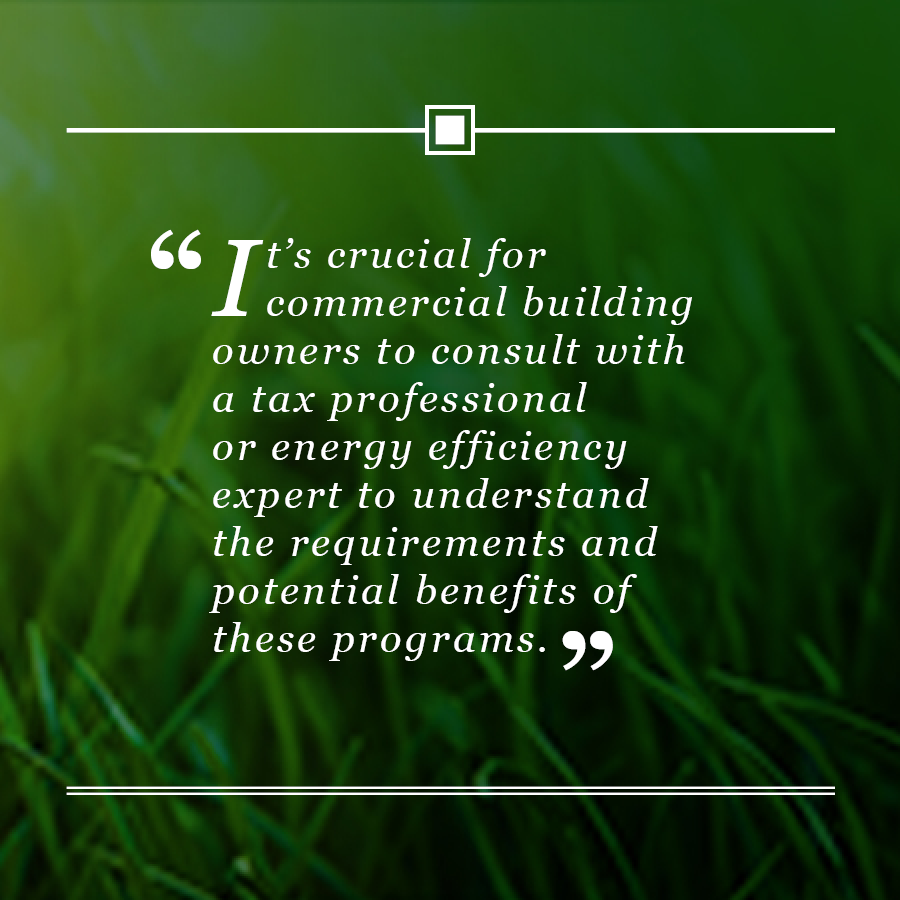
The Inflation Reduction Act of 2022 introduced a wealth of opportunities for owners of commercial buildings. This act, designed to mitigate inflation, offers provisions that can enhance profitability and sustainability.
One of the act’s key provisions is the extension and expansion of the energy-efficient commercial buildings deduction, known as Section 179D. This deduction, made permanent in 2021, has been significantly updated for new construction.
Under the new rules, this deduction can be claimed for commercial buildings in which energy efficiency has been increased by 25% or more, with additional bonuses for higher-efficiency improvements. The act lowers the minimum required savings from a 50% reduction to a 25% reduction, relative to ASHRAE Reference Standard 90.1 that was in effect four years prior to the building’s initial occupancy. To validate the savings, an energy model of the building is required and must be done in an energy modeling software that is approved by the Department of the Treasury and the IRS.
The act has a sliding scale for deductions. For instance, if the prevailing wage and apprenticeship requirements are met and the building achieves a minimum 25% reduction in energy costs or a corresponding decrease in the building’s energy use intensity, the deduction increases to $2.50 per square foot. For an energy reduction greater than 25%, the deduction increases by $.10 per additional percentage of energy reduced, up to $5 per square foot. Furthermore, the lifetime limit has been removed, allowing the 179D deduction to be taken every three tax years (four in some situations). And the allocations to all tax-exempt entities falling under IRC 501(c) have been expanded.

The types of equipment that qualify for these rebates and incentives include energy-efficient appliances, heating, ventilating and air conditioning systems, insulation and renewable energy systems such as solar panels and wind turbines. However, these incentives come with stipulations. For instance, the equipment must meet specific energy efficiency standards, and the tax credits or rebates may only apply to certain types of buildings. Therefore, it’s crucial for commercial building owners to consult with a tax professional or energy efficiency expert to understand the requirements and potential benefits of these programs.
If you’re looking for further information, check out the following resources below that were used to help develop this article. You can also reach out to Mathew Coalson at mcoalson@hanson-inc.com.
“The Federal Building Performance Standard,” Council on Environmental Quality
Requirements and Submission Process for Qualified Software website, Office of Energy Efficiency and Renewable Energy
“Commercial Building Incentives” policy brief, American Council for an Energy-Efficient Economy
“Building a Clean Energy Economy: A Guidebook to the Inflation Reduction Act’s Investments in Clean Energy and Climate Action,” the White House